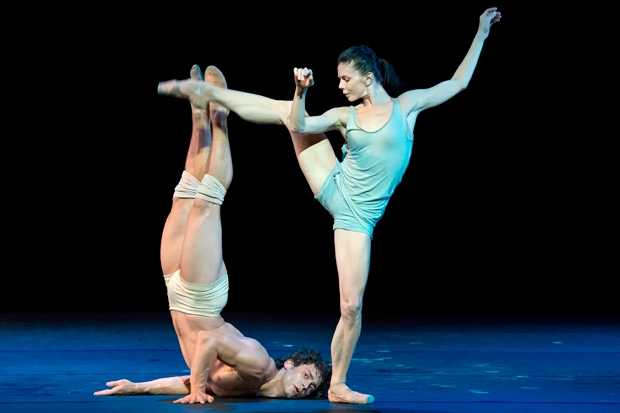Last week, the feast of long-awaited dance events on offer echoed bygone days when London life was dominated by the strategically engineered appearances of rival ballet stars at the same time in different venues.
At the London Coliseum, Solo for Two featured one of ballet’s super-duper couples, Natalia Osipova and Ivan Vasiliev. As Osipova told me in a recent interview, their aim was to tackle choreographic modes outside their standard repertoire. Alas, bravery and bravura do not always go together. The classically trained Mikhail Baryshnikov and, more recently, Sylvie Guillem have made successful forays into modern and postmodern dance, but they were very much the exception. Let’s not forget what happened when Nureyev tried to dance Graham.
But it was not just a miscalculated gamble. It is possible that the three dance-makers, Sidi Larbi Cherkaoui, Ohad Naharin and Arthur Pita, struggled to address and accommodate what is known as the ‘tacit knowledge’ — that is, the individual’s baggage of artistic experiences — of the two ballet stars. The fact that such acclaimed choreographers felt compelled to leave space for the feats Vasiliev is known for is highly significant — even though it is difficult to say whether they felt concessions had to be made, or whether they were asked to make them. Of the three works, Pita’s Facada was the only one that challenged both the acting and the technical skills of the celebrated couple. This witty piece is permeated with theatrically effective layers of dark humour. It is a pity that neither Osipova nor Vasiliev made the most of them, while Elizabeth McGorian, in a ‘walking’ role, ended up stealing the scene.
The week’s other hot dance ticket, the Mariinsky Ballet’s The Genius of Balanchine, fared much better and met all expectations. Balanchine’s A Midsummer Night’s Dream was a bold but wise choice for the Russian company.







Comments
Join the debate for just £1 a month
Be part of the conversation with other Spectator readers by getting your first three months for £3.
UNLOCK ACCESS Just £1 a monthAlready a subscriber? Log in